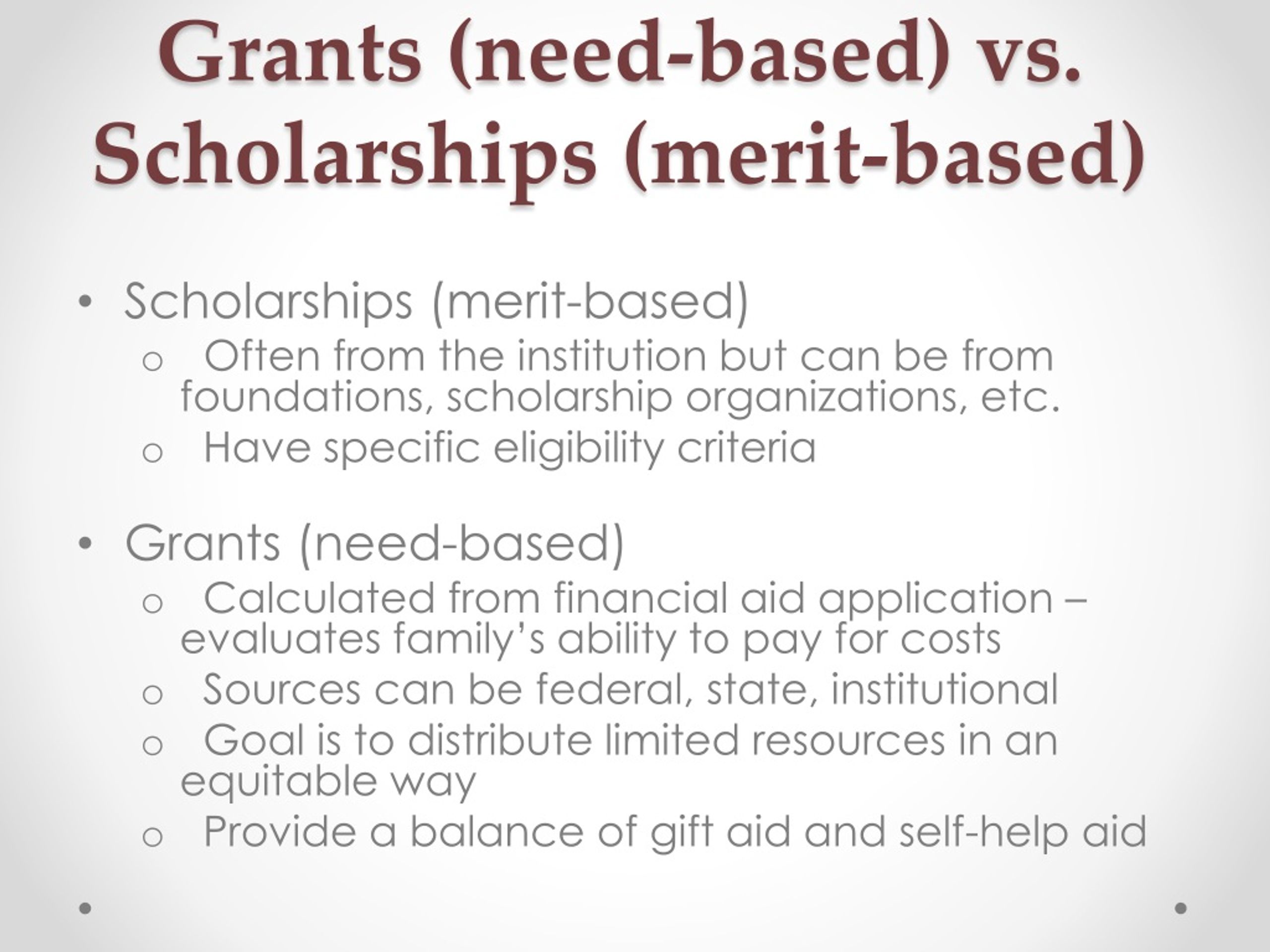State-Funded Scholarships: Access to Higher Education
State-funded scholarships represent a vital pathway to higher education, offering financial assistance to deserving students. These scholarships, funded by state budgets and other sources, alleviate the financial burden of college, enabling students from diverse backgrounds to pursue their academic goals. This exploration delves into the various types of state-funded scholarships, their eligibility criteria, application processes, and the significant impact they have on student success. We will also compare them to other funding options to provide a comprehensive understanding of this crucial resource.
The availability and specifics of these scholarships vary considerably across states, reflecting differing priorities and budgetary constraints. Understanding the nuances of each state’s program is crucial for students seeking this valuable support. This guide aims to clarify the complexities, offering a clear and informative overview of the landscape of state-funded scholarships.
Types of State-Funded Scholarships
State-funded scholarships represent a significant opportunity for students to pursue higher education. These scholarships, offered by individual states, vary widely in their criteria and the amount of funding provided. Understanding the different categories and examples can help students effectively navigate the application process and secure financial assistance. These scholarships are often categorized based on merit, financial need, and specific fields of study.
Merit-Based State Scholarships
Merit-based scholarships reward academic excellence and achievements. Eligibility is typically determined by a student’s GPA, standardized test scores (SAT/ACT), class rank, and sometimes extracurricular activities. These scholarships aim to incentivize high academic performance and recognize exceptional students.
Examples of Merit-Based State Scholarships
State merit-based scholarships often have specific requirements, varying from state to state. For example, some may require a minimum GPA of 3.5, while others may focus on specific academic achievements or leadership roles. The application processes usually involve submitting transcripts, test scores, and sometimes essays or letters of recommendation.
Need-Based State Scholarships
Need-based scholarships are awarded to students who demonstrate significant financial need. Eligibility is determined by considering the student’s and their family’s income, assets, and other financial circumstances. The goal is to make higher education accessible to students regardless of their financial background.
Examples of Need-Based State Scholarships
Many states utilize the Free Application for Federal Student Aid (FAFSA) to determine financial need for their need-based scholarships. The FAFSA provides a standardized measure of a student’s financial situation, allowing states to allocate funds efficiently. Application processes often involve submitting the FAFSA and sometimes additional documentation to verify financial information.
Field-Specific State Scholarships
Field-specific scholarships target students pursuing specific fields of study deemed critical to the state’s economic development or social needs. These scholarships may focus on areas such as STEM (Science, Technology, Engineering, and Mathematics), healthcare, education, or other high-demand professions.
Examples of Field-Specific State Scholarships
States often prioritize fields experiencing labor shortages or those crucial to their economic future. For example, a state might offer scholarships to students pursuing nursing or engineering degrees to address shortages in those professions. Eligibility often requires the student to be enrolled in or accepted into a program within the specified field of study.
Examples of State-Funded Scholarships
The following table provides examples (note that specific details are subject to change and vary by state; this is for illustrative purposes only):
| Scholarship Name | Eligibility | Funding Amount | Application Deadline |
|---|---|---|---|
| Example Merit Scholarship (State A) | 3.8 GPA, 1300 SAT | $5,000 per year | March 1st |
| Example Need-Based Scholarship (State B) | FAFSA Required, Demonstrated Financial Need | Varies based on need | February 15th |
| Example STEM Scholarship (State C) | Enrolled in STEM major, Minimum GPA 3.0 | $2,500 per year | April 1st |
| Example Teacher Education Scholarship (State D) | Accepted into Teacher Education Program | $4,000 per year | May 1st |
Eligibility Requirements and Application Process
Securing a state-funded scholarship often involves navigating specific eligibility criteria and a structured application process. Understanding these requirements is crucial for maximizing your chances of success. This section outlines common eligibility factors and details the typical application procedure, highlighting variations across different state programs.
State-funded scholarships typically require applicants to meet several key eligibility requirements. These often include demonstrating residency within the state, maintaining a minimum GPA, and sometimes pursuing a specific field of study. Residency requirements usually necessitate a certain period of continuous state residency prior to application. GPA requirements vary widely, ranging from a minimum of 2.5 to a much higher 3.5 or above, depending on the scholarship’s competitiveness and the specific academic goals. Some scholarships may target students pursuing specific academic majors deemed crucial to the state’s economic development or social needs, such as STEM fields, healthcare, or education. For instance, a scholarship focused on teacher shortages might prioritize education majors with a strong academic record and commitment to teaching in underserved areas.
Residency Requirements
Most state-funded scholarships mandate proof of residency. This typically involves providing documentation such as a driver’s license, utility bills, or tax returns showing a consistent address within the state for a specified period (often one year or more). Failure to meet these residency requirements will automatically disqualify an applicant, regardless of other qualifications. The specific documentation required and the length of residency needed vary between scholarship programs and should be carefully checked on the individual scholarship’s website.
GPA and Academic Achievement
A minimum GPA is a common eligibility criterion. The required GPA is usually specified within the scholarship’s guidelines and varies based on the program’s competitiveness. High-demand scholarships often have higher GPA requirements, reflecting the program’s selective nature. Applicants should carefully review the GPA requirement for each scholarship they apply for and ensure their academic record meets the minimum threshold. Some scholarships might also consider class rank or other academic achievements beyond GPA, such as participation in honor societies or receipt of academic awards.
Academic Major and Career Goals
Some state-funded scholarships are targeted towards students pursuing specific academic majors or career paths. These scholarships often aim to address state-specific needs or promote growth in particular sectors. For example, a state might offer scholarships to encourage enrollment in nursing programs to address a shortage of healthcare professionals. Applicants should carefully review the scholarship description to ensure their intended major and career goals align with the program’s objectives. Providing a clear articulation of career goals and how the scholarship will contribute to those goals in the application essay is often beneficial.
Application Process Overview
The application process typically involves submitting a completed application form, official transcripts, letters of recommendation, and an essay outlining academic goals and career aspirations. Applicants should carefully adhere to deadlines, as late submissions are usually not accepted. The selection process often involves a review of the application materials by a scholarship committee, who assess the applicant’s academic record, extracurricular activities, and essay content. In some cases, interviews may be part of the selection process.
Required Documents and Deadlines
Commonly required documents include a completed application form, official transcripts from all colleges attended, letters of recommendation from teachers or counselors, and an essay or personal statement. Applicants should ensure all documents are submitted by the stated deadline. Late submissions are rarely considered, emphasizing the importance of careful time management and proactive planning. The specific documents and deadlines vary by scholarship, so careful attention to the individual program requirements is critical. Some programs may also require standardized test scores (SAT or ACT) as part of the application package.
Selection Criteria and Variations in Application Procedures
Selection criteria differ among state-funded scholarships. Some prioritize academic merit, while others may emphasize financial need, community involvement, or a combination of factors. The application procedures also vary. Some scholarships utilize a streamlined online application system, while others may involve more traditional paper-based applications. Applicants should carefully review the specific requirements and procedures for each scholarship to ensure a complete and timely submission.
Funding Sources and Allocation
State-funded scholarships rely on a diverse range of financial resources to support students pursuing higher education. Understanding these sources and the allocation process is crucial for both scholarship applicants and policymakers. This section will detail the typical funding streams and how funds are distributed.
The primary sources of funding for state-funded scholarships are generally threefold: state budgets, endowments, and grants. State budgets represent the largest portion, often allocated through legislative appropriations. These appropriations are subject to annual budgetary processes and can fluctuate based on the state’s overall financial health and political priorities. Endowments, on the other hand, represent a more stable, long-term funding source, comprising invested funds that generate interest income to support scholarships. Finally, grants from federal agencies or private foundations can supplement state funding, often targeted towards specific student populations or academic fields.
Sources of Funding for State Scholarships
State budgets are the most common funding source, with allocations varying widely between states. For example, California might allocate a larger percentage of its budget to higher education compared to a smaller state like Wyoming, reflecting differences in population size, economic conditions, and political priorities. Endowments, built up over time through donations and investments, provide a more predictable and sustainable income stream. The size and investment performance of these endowments significantly impact the number and value of scholarships offered. Grants from organizations like the National Science Foundation or private philanthropic foundations can provide additional funding, often earmarked for specific research areas or student demographics (e.g., scholarships for underrepresented minority students).
Allocation Methods for State Scholarships
The allocation of scholarship funds varies greatly depending on the specific scholarship program and state policies. Some states use a merit-based system, awarding scholarships to students with high academic achievement, standardized test scores, or specific talents. Others prioritize need-based criteria, giving preference to students from low-income families or those facing financial hardship. A combination of merit and need is also frequently employed. The application process itself often includes a competitive element, with scholarships awarded to the most qualified applicants based on a predefined scoring system or ranking. Furthermore, some scholarships may target specific demographics, such as students pursuing STEM fields or those from particular geographical regions.
Factors Influencing Funding Availability
Several factors influence the overall amount of funding available for state-funded scholarships. Economic conditions within the state significantly impact the amount of funding allocated from the state budget. During economic downturns, state governments may reduce spending on higher education, leading to decreased scholarship funding. Conversely, periods of economic growth often allow for increased funding. Legislative priorities also play a critical role; a state legislature that prioritizes higher education funding will generally allocate more resources to scholarships compared to one with different priorities. Finally, the size and performance of state-managed endowments directly impact the amount of scholarship money available from this source. For instance, a successful investment strategy can significantly increase the endowment’s income and, subsequently, the number of scholarships offered.
Impact of State-Funded Scholarships
State-funded scholarships play a crucial role in expanding access to higher education and fostering social mobility. By reducing the financial burden associated with tuition, fees, and living expenses, these scholarships enable many students who would otherwise be unable to afford college to pursue their educational goals. This, in turn, has far-reaching positive consequences for both individuals and society as a whole.
The positive effects of state-funded scholarships are multifaceted and demonstrably impactful on students’ lives. These scholarships not only increase college enrollment rates among low- and moderate-income students but also significantly improve their academic performance and subsequent career prospects. The investment in human capital generated by these programs ultimately benefits the state through a more skilled and productive workforce.
Student Access and Academic Achievement
State-funded scholarship programs demonstrably increase access to higher education for students from disadvantaged backgrounds. For example, a study conducted by the [Name of reputable research institution or government agency] in [Year] showed that [Specific percentage]% of scholarship recipients came from families earning below the state’s median income. These scholarships are frequently targeted towards students who would otherwise face significant financial barriers to attending college, thereby leveling the playing field and promoting educational equity. Further, data indicates a positive correlation between scholarship receipt and improved academic performance. Recipients often demonstrate higher grade point averages (GPAs) and graduation rates compared to their non-recipient peers. This suggests that the financial relief provided by the scholarships allows students to focus more effectively on their studies, reducing the stress associated with financial worries.
Visual Representation of Scholarship Impact
A bar graph could effectively illustrate the impact of state-funded scholarships. The horizontal axis would represent different student groups (e.g., scholarship recipients, non-recipients from low-income families, non-recipients from high-income families). The vertical axis would represent graduation rates (percentage). The bar for scholarship recipients would be significantly taller than the other bars, clearly showing a higher graduation rate. A second bar graph, using the same horizontal axis, could illustrate average annual earnings five years after graduation. Again, the bar representing scholarship recipients would likely be taller, reflecting improved career outcomes. This visual comparison would powerfully demonstrate the positive correlation between scholarship receipt, graduation rates, and subsequent earning potential. For instance, one could include data showing that scholarship recipients have a [Specific percentage]% higher graduation rate and earn [Specific dollar amount] more annually on average five years post-graduation than their low-income non-recipient peers. This would provide a concrete illustration of the return on investment in state-funded scholarship programs.
Comparison with Other Funding Options
Choosing the right path to fund higher education can feel overwhelming, given the variety of options available. State-funded scholarships represent just one piece of the financial aid puzzle. Understanding how they compare to other funding sources—federal grants, loans, and private scholarships—is crucial for making informed decisions. This section will outline the key differences and help you weigh the advantages and disadvantages of each.
State-funded scholarships, federal grants, student loans, and private scholarships each offer distinct pathways to finance higher education, each with its own set of benefits and drawbacks. A thorough understanding of these differences is essential for students navigating the complex landscape of financial aid.
State-Funded Scholarships Compared to Other Funding Options
The following comparison highlights the key features of state-funded scholarships alongside federal grants, loans, and private scholarships. This comparison considers eligibility criteria, the application process, and repayment requirements (where applicable) to provide a comprehensive overview.
- State-Funded Scholarships: Typically require residency within the state and often focus on academic merit, specific fields of study, or financial need. The application process usually involves submitting an application to the state’s higher education agency. There are no repayment requirements as they are essentially gifts. Eligibility varies widely by state and program. For example, the California State University system offers numerous merit-based scholarships, while Texas offers scholarships focusing on specific fields like engineering or teaching.
- Federal Grants (e.g., Pell Grants): These are need-based grants awarded by the federal government. Eligibility is determined by the student’s Expected Family Contribution (EFC) as calculated by the Free Application for Federal Student Aid (FAFSA). The application process involves completing the FAFSA. There are no repayment requirements. The amount awarded depends on financial need and the cost of attendance. For instance, a student with a very low EFC could receive the maximum Pell Grant amount, while a student with a higher EFC might receive a smaller amount or none at all.
- Federal Student Loans: These loans are provided by the federal government and are available to students regardless of financial need. Eligibility is determined by enrollment status and credit history (for some loan types). The application process involves completing the FAFSA. Repayment begins after graduation or when the student drops below half-time enrollment, with various repayment plans available. Interest accrues while the student is in school (for some loan types). The interest rates and repayment terms vary depending on the type of loan (e.g., subsidized vs. unsubsidized).
- Private Scholarships: These scholarships are offered by private organizations, corporations, or individuals. Eligibility criteria vary widely, depending on the sponsor’s priorities. The application process varies significantly across organizations, with some requiring essays, recommendations, and transcripts. There are no repayment requirements. Finding and applying for private scholarships can be time-consuming, and competition can be fierce. Examples include scholarships offered by professional organizations, specific companies, or community foundations.
Advantages and Disadvantages of Each Funding Option
Each funding option presents a unique set of advantages and disadvantages. Careful consideration of these factors is crucial in making informed decisions about financing higher education.
- State-Funded Scholarships: Advantages include no repayment, potential for significant financial assistance, and focus on state residents. Disadvantages include limited availability, competitive application processes, and specific eligibility criteria.
- Federal Grants: Advantages include no repayment and widespread availability based on financial need. Disadvantages include limited award amounts based on EFC, and the need to complete the FAFSA.
- Federal Student Loans: Advantages include accessibility regardless of financial need and flexible repayment options. Disadvantages include the accumulation of debt, interest charges, and the potential for long-term financial burden.
- Private Scholarships: Advantages include the potential for significant financial assistance and a wide range of criteria. Disadvantages include highly competitive application processes, limited availability, and significant time commitment for searching and applying.
State-Specific Variations
State-funded scholarship programs exhibit significant diversity across the United States, reflecting each state’s unique economic priorities, educational landscape, and demographic composition. These variations extend to eligibility criteria, funding amounts, and the types of programs offered. Understanding these differences is crucial for students seeking state-level financial aid.
State scholarship programs are not uniformly structured across the country. Factors such as state budget allocations, population demographics, and specific educational goals influence the design and implementation of these programs. Some states prioritize scholarships for students pursuing specific fields, like STEM or healthcare, while others focus on supporting students from low-income backgrounds or those attending in-state institutions. This heterogeneity creates a complex but potentially advantageous landscape for students seeking financial aid.
Examples of Unique State Scholarship Programs
The following table showcases a small sample of the diverse state-funded scholarship programs available. Note that eligibility criteria and funding amounts are subject to change and should be verified directly with the relevant state agency.
| State | Scholarship Name | Eligibility Criteria | Funding Details |
|---|---|---|---|
| California | California State University Grant | California resident, enrolled full-time at a CSU campus, demonstrating financial need. | Varies based on financial need and enrollment status; can cover a significant portion of tuition. |
| Texas | Texas Grant Program | Texas resident, enrolled at a Texas public college or university, demonstrating financial need. | Covers tuition and fees, with amounts varying based on financial need and institution. |
| Florida | Florida Bright Futures Scholarship Program | Florida resident, high school graduate, meets specific GPA and standardized test score requirements. | Covers tuition and fees at Florida public colleges and universities, with varying levels based on academic achievement. |
| New York | New York State Tuition Assistance Program (TAP) | New York resident, enrolled at least half-time in an eligible program at an approved institution. | Provides grants to cover tuition costs, with amounts varying based on financial need and enrollment status. |
| Washington | Washington State Opportunity Scholarship | Washington resident, enrolled at a Washington state college or university, demonstrating financial need and academic progress. | Covers tuition and fees, with amounts varying based on financial need and enrollment status. Priority given to Pell Grant recipients. |
Ending Remarks
Securing a higher education remains a significant aspiration for many, and state-funded scholarships play a crucial role in making this dream a reality for countless students. By understanding the diverse types of scholarships available, the eligibility requirements, and the application processes, students can effectively navigate the system and access the financial support they need. This comprehensive overview highlights not only the financial benefits but also the broader societal impact of these initiatives, emphasizing their contribution to increased access, improved graduation rates, and enhanced career prospects for students across the nation. Ultimately, state-funded scholarships represent a powerful investment in the future, fostering a more educated and prosperous society.









